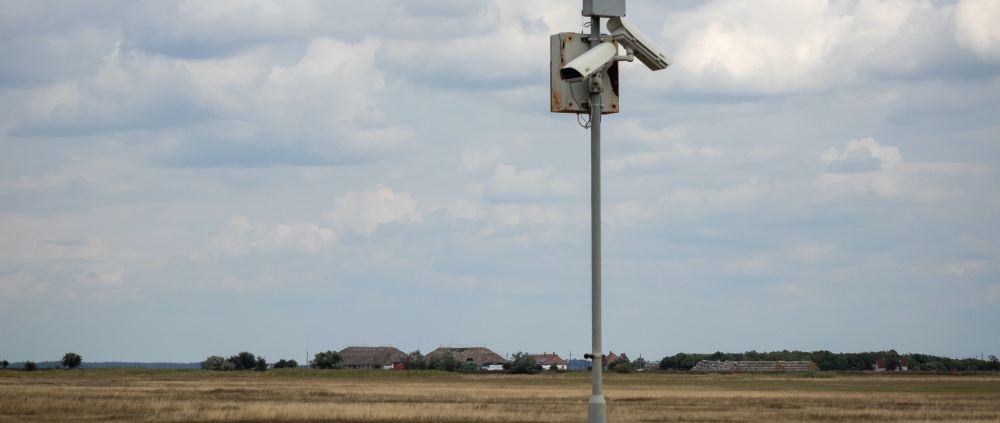A free-standing AI road safety camera system deployed in Cornwall caught 300 drivers in the first three days.
How It Works
The camera system, on the A30 near Launceston, implemented by road safety tech firm Acusensus in partnership with Vision Zero South West, records clear images of passing vehicles (and of the driver) thanks to a series of cameras with high shutter speeds, an infra-red flash and a lensing and filtering system.
AI Reviews And Sorts Images
The AI aspect of the system is used to quickly review each image (the cameras are monitoring the road continuousiy) and to identify images which could contain evidence of an offence. The (anonymised) images identified as containing offences are then sent to sent for review by a person to confirm whether an offence has actually occurred.
Catching Distracted Drivers
The system (which has also been trialled recently by Hampshire Constabulary and Thames Valley Police) was deployed in Cornwall as part of the ‘Heads Up’ solution, i.e. using AI cameras to identify distracted drivers and those not wearing a seatbelt. This is because the AI camera’s are able to capture clear images of the driver and what they are doing, such as using a phone while driving.
Two Cameras Focused On Seatbelt & Mobile Phone
The AI system uses two cameras to specifically capture suspected distraction and seatbelt offences. The first camera is set at a shallow angle to identify mobile phone use to the ear, and to see is the seatbelt is across the body or hanging down behind the driver.
The second camera uses a steep view to capture visibility of mobile phone use low down, and to detect behaviour like texting near the steering wheel or door. The second camera also provides evidence of seatbelt use by being able to check the presence of the lap portion of the belt, and to confirm that the seatbelt is clipped into the buckle.
Using this camera setup, in the first three days of being in operation in Cornwall, the new AI camera system detected 117 mobile phone and 180 seat belt offences.
Can Be Moved
The fact that the new AI camera system is free standing (mounted on a van) means it can be easily moved and can be deployed at other locations on some of the region’s most used roads.
AI Improving Road Safety
Geoff Collins, UK General Manager for Acusensus, said: “The ‘Heads Up’ system is a perfect example for how AI technology can be used to improve road safety. Distracted drivers are a significant hazard for everyone, whilst those not wearing a seatbelt are far more likely to be killed in a collision – the Acusensus technology can help to change behaviours, reducing the casualty toll on our roads.”
Adrian Leisk, Head of Road Safety for Devon & Cornwall Police, said: “We are employing this new technology to send a clear message to anyone who continues to use their phone behind the wheel – you will get caught.”
“Whether it’s by the Acusensus cameras, a passing officer or on video footage submitted through Op Snap, the result will be the same and you will end up with a hefty fine and six penalty points – which could be enough to cost some drivers their license and livelihood.”
What Does This Mean For Your Business?
In the UK, it’s been illegal to use a mobile phone while driving since 2003 but many motorists still do it, representing a major distraction risk, and causing many accidents and fatalities. It’s also been a legal requirement to wear a seatbelt while driving since 1983 but it seems that many motorists still fail to do so. Finally, the mobile AI camera system has provided UK police with a means to collect reliable evidence for these offences because the camera system can actually see into the car and has two cameras specifically focused on the seatbelt and the driver’s lap areas – something not possible before with conventional cameras. The AI aspect of the system also means that cameras can run continuously and the image of each car can be quickly processed and sorted, which is another aspect that would not have been possible with conventional camera systems.
The fact that the camera system is free standing and operated from a van is also a major advantage as it can be moved and used quickly on trouble-spots anywhere in the country and so motorists won’t simply be able to learn where cameras are (as they do with fixed speed cameras). This could, therefore, be an example of AI saving lives and making the roads safer by changing driver behaviour. Furthermore, it could provide job and investment opportunities in a growing market for AI based surveillance technology, as it has for companies like Acusensus (i.e. the makers of the cameras).
For those who are worried that AI is ‘taking over’ and being trusted fully with important decisions (e.g. whether a driver gets points on their licence, thereby affecting their livelihood), the Acusensus system used by the Police in Cornwall uses human checks for each image flagged as showing a potential offence, thereby providing a failsafe stage. Judging by the success in Cornwall and in other trials, we may well see more specialised AI camera systems, focused on tackling specific problems, deployed in the near future.
If you would like to discuss your technology requirements please:
- Email: hello@gmal.co.uk
- Visit our contact us page
- Or call 020 8778 7759
Back to Tech News



